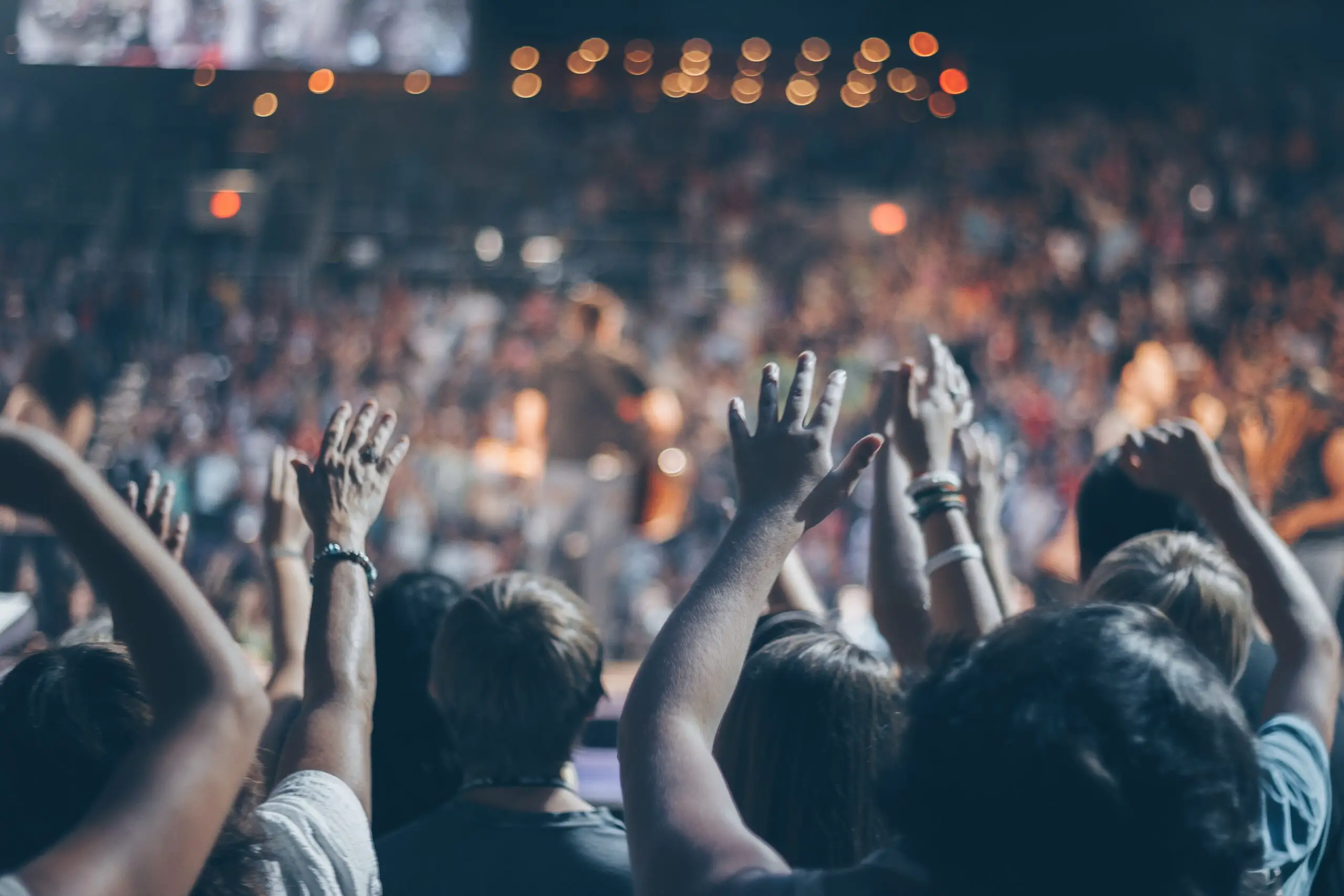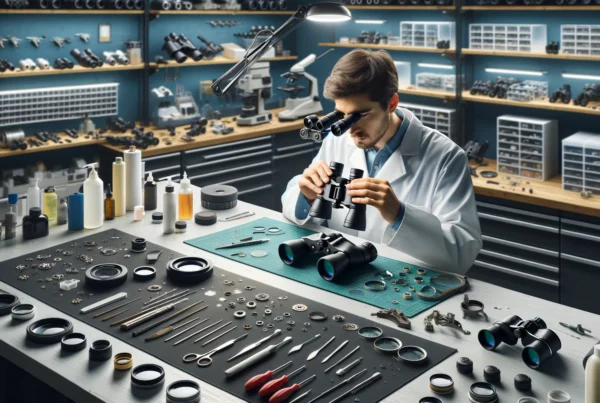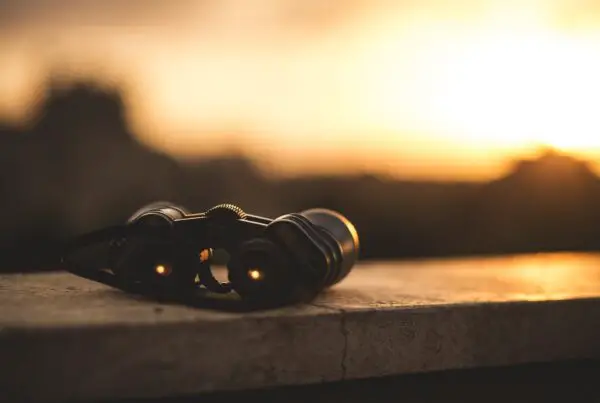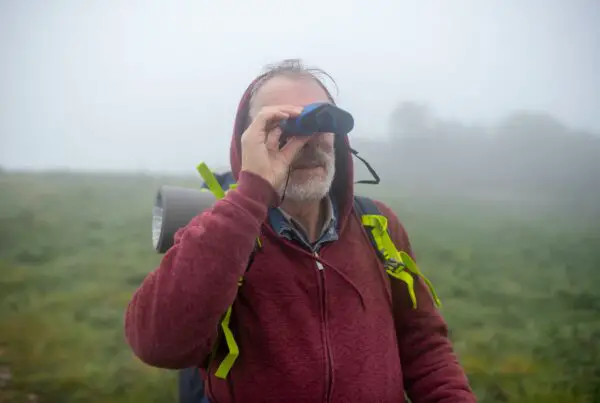Contents
Live performances and concerts can be an unforgettable experience. From the pulsating music to the electrifying performances and the sea of adoring fans, there’s nothing quite like being at a live show. However, sometimes being in the crowd can limit your view of the stage, making it difficult to see your favorite performers. This is where binoculars come in handy.
Choose binoculars with 7x to 10x magnification and wider field of view. Hold them steady with both hands or use a tripod adapter. Adjust inter-pupillary distance, focus, and use sparingly for an enhanced concert experience.
Binoculars can magnify your view, allowing you to see the performers up close and in detail. But, using binoculars at a concert is not as easy as it may seem. To help you make the most of your binoculars, we’ve compiled a list of essential tips to help you become a binocular virtuoso and unlock an unparalleled view of your beloved performers.
#1: Choose the Right Binoculars
The first and most important step is to choose the right binoculars. Opt for binoculars with a lower magnification level, preferably between 7x and 10x. This range strikes a perfect balance, allowing you to enjoy a detailed view while maintaining a wider field of view to track moving performers effortlessly.
A. Optimal Magnification Level (7x to 10x):
- When selecting binoculars for concerts and live performances, it’s crucial to consider the optimal magnification level. A magnification range of 7x to 10x is recommended for these events.
- Higher magnifications might offer a closer view, but they also narrow the field of view, making it challenging to track fast-moving performers on stage.
- The 7x to 10x range strikes a balance between magnification and maintaining a wider field of view, ensuring you don’t miss any captivating moments.
B. Wider Field of View for Tracking Moving Performers:
- In the dynamic environment of a live performance, the ability to track moving performers is essential.
- A wider field of view allows you to follow the action on stage smoothly and capture all the details of their movements.
- When choosing binoculars, consider models with a wide field of view, typically expressed in feet at a specific distance or as an angular value (e.g., 360 feet at 1000 yards or a 6.5-degree field of view).
- A broader field of view enhances your concert experience by providing a comprehensive visual canvas to immerse yourself in the performance.
#2: Practice Holding the Binoculars Steady:
Stability is key when using binoculars, especially during high-energy performances. Employ a firm grip using both hands, cradling the binoculars close to your face. For added steadiness, consider resting your elbows on a stable surface or utilizing a tripod adapter. By minimizing shake, you’ll unlock a crystal-clear image that transports you closer to the stage.
Here is a detailed guide on binoculars stability
A. Using Both Hands for Stability:
- One of the key aspects of using binoculars effectively at concerts is maintaining a steady grip.
- Holding the binoculars with both hands provides stability and minimizes hand shake, allowing you to achieve a clear and focused view.
- Place your hands around the binoculars, gripping them firmly but without excessive tension.
- Keep your arms close to your body to further stabilize your hands and reduce any unnecessary movement.
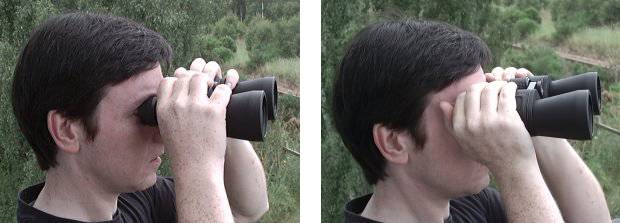
B. Resting Elbows on a Stable Surface or Using a Tripod Adapter:
- To further enhance stability, consider resting your elbows on a stable surface, such as a railing or ledge if available. This additional support can significantly reduce hand tremors and allow for a steadier view.
- If a stable surface isn’t accessible, you can explore using a tripod adapter specifically designed for binoculars. This accessory attaches your binoculars to a tripod, providing a solid foundation for steady viewing throughout the concert.
- It’s important to note that not all binoculars are compatible with tripod adapters, so ensure compatibility before purchasing one.
#3: Adjust the Interpupillary Distance:
No two pairs of eyes are the same, and neither are their distances apart. Adjusting the interpupillary distance on your binoculars ensures optimal alignment. By matching this distance to the width of your eyes, you’ll experience a seamless, single, and circular image with no overlapping or gaps. It’s the ticket to visual nirvana!
A. Explanation of Interpupillary Distance:
- The interpupillary distance refers to the distance between the centers of your pupils. It varies from person to person and plays a crucial role in achieving a comfortable and aligned view through binoculars.
- By adjusting the binoculars to match your specific interpupillary distance, you ensure that both eyes receive the same image simultaneously, resulting in a clear, single, and circular view.
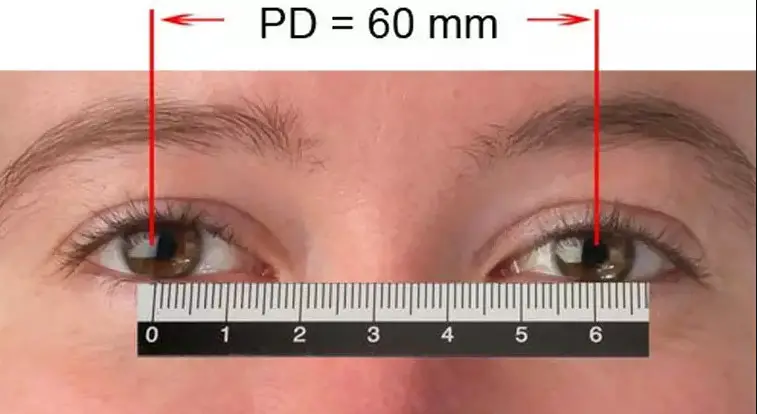
B. Setting the Distance for a Single, Circular Image:
To adjust the interpupillary distance on your binoculars, follow these steps:
- Hold the binoculars up to your eyes without adjusting the distance.
- Using the central hinge, gently move the barrels closer together or farther apart until you see a single, merged image with no overlapping or gaps in the view.
- Keep adjusting until the view appears as a perfect circle, indicating that the binoculars are aligned with your interpupillary distance.
- Once you achieve a single, circular image, lock the central hinge in place to maintain the correct distance.
#4: Focus Properly:
Achieving the perfect focus can make all the difference in your binocular journey. Start by adjusting the central focus wheel to obtain a general focus. Then, fine-tune the focus using the individual eyepiece adjustments to compensate for any differences between your eyes. This delicate calibration ensures sharpness and clarity, bringing the performers into razor-sharp focus.
A. Using the Central Focusing Wheel:
The central focusing wheel is a fundamental feature of binoculars that allows you to achieve a general focus. Follow these steps to effectively use the central focusing wheel:
- Identify a prominent object or performer on stage.
- Hold the binoculars steady with both hands and bring them up to your eyes.
- Using the central focusing wheel, adjust it in either direction until the image appears reasonably sharp.
- Take your time to find the optimal focus point by rotating the wheel slowly and observing the changes in image clarity.
The central focusing wheel controls the focus for both eyes simultaneously. It provides a starting point for fine-tuning your view and ensuring a clear image of the entire scene.
B. Fine-Tuning with Individual Eyepiece Focus Adjustments:
After achieving a general focus using the central focusing wheel, you can further refine the focus for each eye using the individual eyepiece focus adjustments. Here’s how:
- Cover the objective lenses (the larger lenses at the front of the binoculars) with your hands or lens caps to avoid strain on your eyes.
- Close your right eye or look through the right eyepiece with your left eye and use the left eyepiece focus adjustment (located on the left eyepiece) to focus the image for your left eye.
- Repeat the process, closing your left eye or looking through the left eyepiece with your right eye, and adjust the right eyepiece focus adjustment (located on the right eyepiece) until the image is sharp for your right eye.
- Alternate between adjusting the left and right eyepiece focus adjustments until both eyes perceive a sharp, clear image.
#5: Experiment with Different Settings
Lighting conditions can vary dramatically at concerts and live performances. To accommodate glasses or correct for visual impairments, experiment with the binocular’s settings. Adjust the eyecups to find the most comfortable fit, and utilize the built-in diopter adjustment if necessary. Tailoring these settings to your needs will optimize your viewing experience and immerse you in the magic of the performance.
A. Adjusting Eyecups and Diopter for Glasses or Visual Impairments:
If you wear glasses or have visual impairments, there are additional settings you can adjust to ensure a comfortable and optimized viewing experience:
- Eyecup Adjustment: Many binoculars come with adjustable eyecups that can be folded up or down. For glasses wearers, fold down the eyecups to create a comfortable distance between your eyes and the binocular lenses. This allows you to maintain a full field of view without squinting or straining.
- Diopter Adjustment: The diopter adjustment compensates for any differences in vision between your eyes. It is especially useful if you have different prescriptions for each eye or if you have astigmatism. To make the adjustment: a. Close your non-dominant eye or cover the corresponding eyepiece. b. Look at a well-defined object or performer on stage. c. Use the diopter adjustment, usually located on the right eyepiece, to focus the image for your dominant eye. d. Open both eyes and check if the image appears clear and in focus. Adjust the diopter further if needed until both eyes perceive a sharp image.
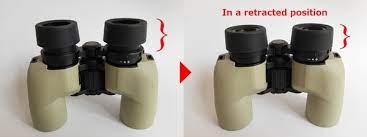
By adjusting the eyecups and diopter, you can customize the binoculars to suit your specific visual needs, ensuring a comfortable and precise view of the concert or live performance.
B. Finding the Most Comfortable and Optimal View:
Finding the most comfortable and optimal view is a matter of personal preference. Here are some tips to help you achieve it:
- Experiment with Different Settings: Don’t be afraid to experiment with various settings, such as magnification, focus, and interpupillary distance. Take the time to find the combination that provides the clearest, sharpest, and most comfortable view for your eyes.
- Consider Lighting Conditions: Lighting can impact your viewing experience. Adjust the binocular settings accordingly to accommodate different lighting conditions during the concert. For example, you may need to adjust the eyecups if the lighting is particularly bright or dim.
- Take Breaks and Observe Without Binoculars: While binoculars enhance your view, it’s important to take breaks and experience the concert directly. Engage with the atmosphere, connect with the crowd, and enjoy the live energy without the barrier of binoculars.
- Practice and Familiarize Yourself: Use your binoculars before the concert to practice focusing, adjusting settings, and getting comfortable with using them. Familiarize yourself with the controls and become proficient in making quick adjustments during the performance.
#6: Be Mindful of Your Surroundings
While relishing the stunning visuals offered by your binoculars, it’s crucial to be mindful of your surroundings. Remember to be considerate of fellow concertgoers and avoid blocking their view. Be conscious of any movement or noise you might create while adjusting your binoculars, ensuring an enjoyable experience for everyone.
A. Consideration for Others’ Views:
While using binoculars to enhance your concert experience, it’s important to be considerate of those around you. Here are some tips to ensure that your binocular use doesn’t hinder others’ enjoyment:
- Observe Concert Etiquette: Familiarize yourself with the concert venue’s rules and guidelines regarding binocular use. Some venues may have restrictions on the size of binoculars or where they can be used. Adhere to these guidelines to maintain a respectful environment for everyone.
- Avoid Obstructing Views: Be mindful of your positioning and avoid blocking the view of others when using binoculars. Ensure that your movements or the extended binoculars do not obstruct the line of sight for those behind you.
- Share the Experience: If you notice someone nearby struggling to see, offer to share your binoculars for a moment. It’s a small gesture that can make a significant difference in someone else’s concert experience.
B. Minimizing Movement and Noise While Adjusting Binoculars:
When adjusting your binoculars during the concert, take steps to minimize movement and noise, ensuring a seamless and uninterrupted experience for both yourself and those around you:
- Adjust Binoculars Between Songs or Breaks: Take advantage of moments between songs or during breaks in the performance to make any necessary adjustments. This way, you can minimize distractions and avoid drawing attention away from the stage.
- Make Smooth and Slow Movements: When adjusting focus or making changes to your binocular settings, do so with slow and deliberate movements. Sudden or jerky motions can be distracting to others around you. Smoothly transition from one adjustment to another to maintain a continuous viewing experience.
- Keep Conversations Low and Discreet: If you need to communicate with others while using binoculars, keep your voice low and minimize conversations to prevent disturbing those nearby.
#7: Use Binoculars Sparingly
Binoculars can be an enchanting tool, but it’s essential to strike a balance. Avoid becoming overly reliant on your binoculars. Take occasional breaks to bask in the energy of the crowd and soak in the overall atmosphere. The binoculars should enhance your experience, not detract from it.
A. Balancing Binocular Use with Immersing in the Live Performance:
While binoculars can enhance your concert experience, it’s important to strike a balance between using them and fully immersing yourself in the live performance. Here’s how you can achieve that balance:
- Use Binoculars for Key Moments: Instead of continuously using binoculars throughout the entire concert, selectively use them for specific moments that require closer observation. This allows you to capture the details of a breathtaking solo or the expressions of the performers without missing out on the overall atmosphere.
- Engage with the Crowd and Energy: Don’t forget to embrace the energy and connection with the crowd. Take breaks from using binoculars to appreciate the collective experience and enjoy the concert as a whole. Dance, sing along, and let yourself be swept up in the atmosphere.
- Create Memories: While binoculars provide a close-up view, remember that some of the most memorable moments of a concert come from the overall experience. Use your binoculars to capture a few special memories, but also take time to absorb the magic happening around you without the barrier of binoculars.
B. Taking Breaks to Fully Enjoy the Overall Atmosphere:
To fully immerse yourself in the concert experience, take breaks from using binoculars and embrace the overall atmosphere. Here are some suggestions:
- Put the Binoculars Down: Take occasional breaks by setting the binoculars aside and experiencing the concert with your naked eye. Feel the music, the vibrations, and the energy of the crowd. It allows you to connect with the performance on a more visceral level.
- Enjoy the Stage Production: Concerts often include impressive stage setups, lighting effects, and visual displays. Take the opportunity to appreciate the artistic elements of the production without the need for binoculars. Allow yourself to be captivated by the grandeur of the show.
- Soak in the Ambience: Take moments to simply close your eyes and absorb the ambiance of the concert. Listen to the crowd’s excitement, the sound of instruments, and the voice of the performers. Engage all your senses and let the music envelop you.
Frequently Asked Questions (FAQs)
Here are some frequently asked questions (FAQs) and answers about using an air fryer for the first time:
Q1: What is the ideal magnification level for binoculars at concerts? A: The optimal magnification level for binoculars at concerts is typically between 7x and 10x. This range provides a good balance between magnification and stability, allowing you to get a closer view of the performers without compromising the field of view or image steadiness.
Q2: How do I hold binoculars steady during a concert? A: To hold binoculars steady, use both hands and bring them close to your eyes while maintaining a firm grip. Resting your elbows on a stable surface, such as a railing or your own body, can further enhance stability. Alternatively, you can use a tripod adapter to attach your binoculars to a tripod for even greater steadiness.
Q3: Can I adjust binocular settings while at a concert? A: Yes, you can adjust binocular settings during a concert. Use the central focusing wheel to achieve a general focus, and fine-tune the focus for each eye using individual eyepiece adjustments. Additionally, you can adjust the interpupillary distance to align the binoculars with your eyes for a clear and comfortable view.
Q4: Should I use binoculars throughout the entire concert? A: It is recommended to use binoculars sparingly and strike a balance between using them and fully immersing yourself in the live performance. Take breaks from using binoculars to enjoy the overall atmosphere, engage with the crowd, and experience the concert without any visual barriers.
Q5: How can I be considerate of others while using binoculars at a concert? A: When using binoculars at a concert, be mindful of others around you. Avoid blocking their view by adjusting your positioning. Minimize movements and keep noise levels low when making adjustments to the binoculars. Considerate behavior ensures that everyone can enjoy the concert to the fullest.
Conclusion
By incorporating these tips into your concert repertoire, you’ll transform from a mere spectator to a full-fledged participant in the magic of live performances. Binoculars open up a world of detail and artistry, granting you an up-close and personal encounter with your favorite artists. So, grab your binoculars, fine-tune your focus, and prepare to embark on an unforgettable journey of sight and sound. Get ready to witness concerts in a whole new light!

A Binoculars enthusiast, who love exploring skies and watching birds. It is my hobby to collect Binoculars of different kinds and try to explore the world through various lenses. This is all I do to explore happiness by magnifying my beautiful world.

